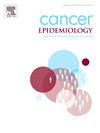2010-2020年广州地区上消化道肿瘤发病趋势及影响因素分析
IF 2.3
3区 医学
Q3 ONCOLOGY
引用次数: 0
摘要
上消化道肿瘤在中国和世界范围内的负担都很重。本研究旨在探讨2010 - 2020年广州地区上消化道肿瘤发病的时间趋势及影响因素。方法采用关节点回归模型分析上消化道肿瘤发病的时间变化趋势。此外,利用灰色关联分析来检验相关因素对观测趋势的影响。结果肿瘤发病率数据来源于广州市肿瘤登记处,人口数据来源于广州市统计局。2010年至2020年间,该地区报告了5375例食管癌(EC)和10880例胃癌(GC)。男性的发病率始终高于女性,在80-84岁的人群中,男性和女性的发病率最高。联合点回归分析显示,EC和GC的发病率总体呈下降趋势。女性EC的发病率下降明显快于男性,而女性GC的发病率保持稳定。此外,经济、医疗、土壤和空气质量因素与这两种癌症的发病率密切相关,尽管它们之间存在一些差异。结论广州市上消化道肿瘤的疾病负担较低。该研究为理解和管理上消化道癌症提供了社会视角,并为优化其他高危地区的癌症控制策略提供了有价值的见解。本文章由计算机程序翻译,如有差异,请以英文原文为准。
Exploring temporal trends and influencing factors for upper digestive tract cancers in Guangzhou, China: 2010–2020
Background
The burden of upper digestive tract cancers is heavy in China and the world. This study was conducted to investigate the temporal trends and influencing factors associated with the incidence of upper digestive tract cancers in Guangzhou, China, from 2010 to 2020.
Methods
In this study, a jointpoint regression model was employed to analyze the temporal trends in the incidence of upper digestive tract cancers. Additionally, grey correlation analysis was utilized to examine the impact of correlation factors on the observed trends.
Results
Cancer incidence data came from Guangzhou Cancer Registry and population data came from Guangzhou Bureau of Statistics. Between 2010 and 2020, there were 5375 reported cases of esophageal cancer (EC) and 10,880 cases of gastric cancer (GC) in the region. The incidence rates were consistently higher in men than in women, with the highest rates observed in both genders among individuals aged 80–84. Joinpoint regression analysis indicated a general decreasing trend in the incidence of both EC and GC. The incidence of EC in females has decreased significantly faster than in males, while the incidence of GC in females has remained more stable. Additionally, economic, medical, soil, and air quality factors are closely related to the incidence of these two types of cancer, although there are some differences between them.
Conclusion
The disease burden of upper digestive tract cancers in Guangzhou is relatively low. This study offers a social perspective for understanding and managing upper digestive tract cancers, and it provides valuable insights for optimizing cancer control strategies in other high-risk regions.
求助全文
通过发布文献求助,成功后即可免费获取论文全文。
去求助
来源期刊

Cancer Epidemiology
医学-肿瘤学
CiteScore
4.50
自引率
3.80%
发文量
200
审稿时长
39 days
期刊介绍:
Cancer Epidemiology is dedicated to increasing understanding about cancer causes, prevention and control. The scope of the journal embraces all aspects of cancer epidemiology including:
• Descriptive epidemiology
• Studies of risk factors for disease initiation, development and prognosis
• Screening and early detection
• Prevention and control
• Methodological issues
The journal publishes original research articles (full length and short reports), systematic reviews and meta-analyses, editorials, commentaries and letters to the editor commenting on previously published research.
 求助内容:
求助内容: 应助结果提醒方式:
应助结果提醒方式:


